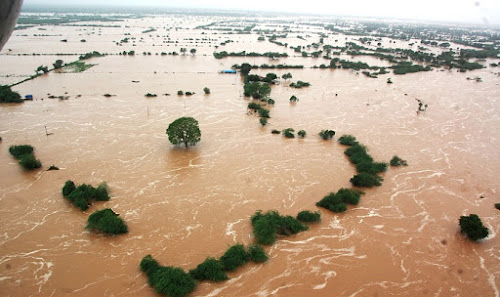Why is Assam in News every year for Floods?
The recent flood in Assam has led to heavy casualties, displacement of peoples and animals and destruction of property and environment.
It has also led to inundation of 80% of the area of Kaziranga National Park.
Reason behind Floods:
1. Ill-maintained or poorly constructed river embankments are the main reason behind the flooding.
- One major feature of flood management in Assam is total dependence on embankments.
- Assam began constructing embankments in the 1960s and most of them have outlived their utility. Many of these started breaching or collapsing from the 1990s, more seriously from the 2000s.
2. Massive deforestation in catchment areas of rivers or release of waters by dams upstream.
3. Climate change is also a factor behind floods.
Floods in Kaziranga’s Ecosystem:
1. Experts believe that floods are necessary for Kaziranga by virtue of its riverine ecosystem. The system won’t survive without water.
- Kaziranga National Park and Tiger Reserve (KNPTR) is sandwiched between the Brahmaputra river and the Karbi Anglong Hills. The entire area is formed by alluvial deposits from the Brahmaputra and its tributaries.
2. The regenerative nature of floods helps replenish Kaziranga’s water bodies and maintain its landscape, which is a mix of wetlands, grasslands and semi-evergreen deciduous forests.
3. The floodwaters function as a breeding ground for fish, which are carried away by the receding waters into the Brahmaputra. i.e the Kaziranga’s floods replenishes the Brahmaputra’s stock of fish.
4. The waters also help get rid of unwanted plants such as water hyacinth which collect in huge masses in the landscape.
Issues Involved:
1. Frequent Floods: Earlier, a big flood would come once in ten years, now they come every other year.
2. NH-37: When the flood water hits a certain level, the animal moves towards safer, higher ground in the Karbi Anglong hills. However, they have to cross NH-37 which cuts across the park, which leads to the killing of animals in road accidents.
3. Animals are also killed by poachers who take advantage of their vulnerability.
4. Human-animal Conflict: Animals also move towards villages in floods, this leads to human-animal conflict.
Steps taken during Floods:
1. The authorities keep a track of updates from the Central Water Commission, and monitor water levels of the Brahmaputra tributaries upstream in Arunachal Pradesh.
2. Camps are organised to create awareness against poaching and harming wild animals that are rendered vulnerable during the floods.”
3. When the floods hit, Section 144 of CrPC is imposed along NH-37, speed limits are enforced and fines levied. Barricades are also placed to help animals cross over to Karbi Anglong.
Way Forward
1. In the absence of long-term alternatives, the government has to invest in strong, durable embankments to ensure that the situation does not deteriorate every year.
2. Kaziranga, with its rich grassland habitats, has a primary role to play in supporting the wildlife populations.
3. Emphasis needs to be put on securing animal corridors and ensuring a safe passage to the Karbi hills.
4. Need for a landscape-scale conservation approach that recognises the value of the Karbi Anglong hills.
- The highlands of Karbi Anglong, where the animals take refuge, are the lifeline of the park during the floods.



That's great, you beautiful captured all issues.. well researched..
ReplyDeleteThankyou😊
Delete